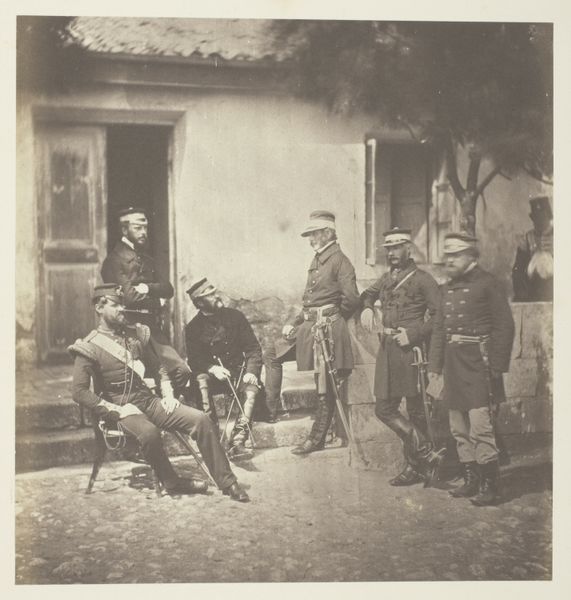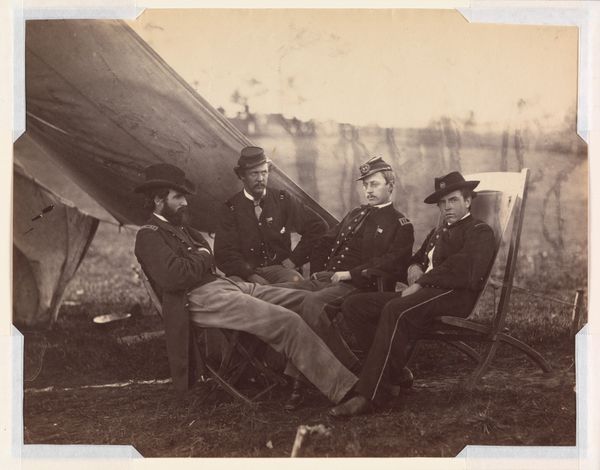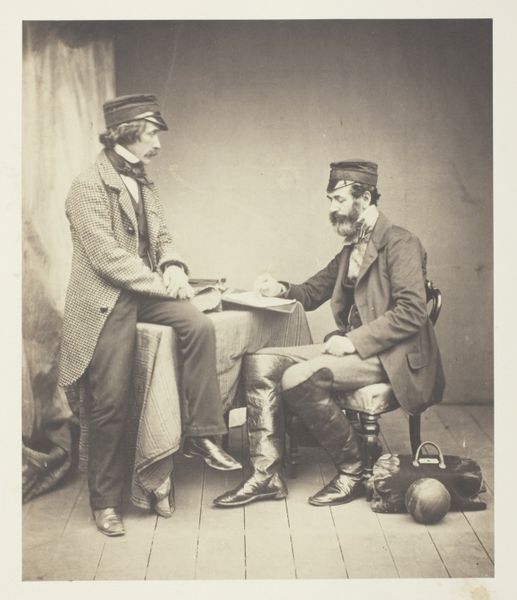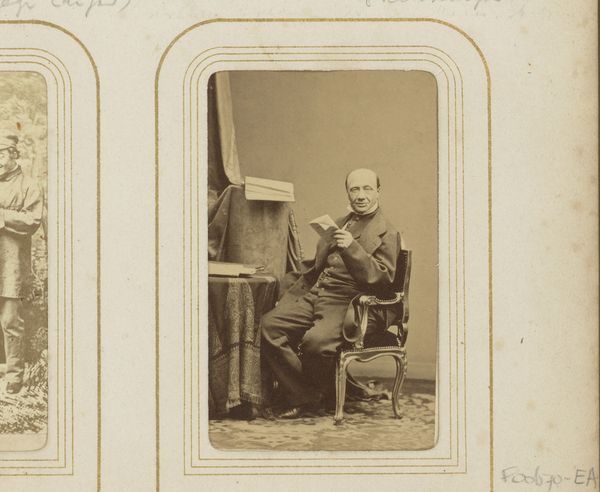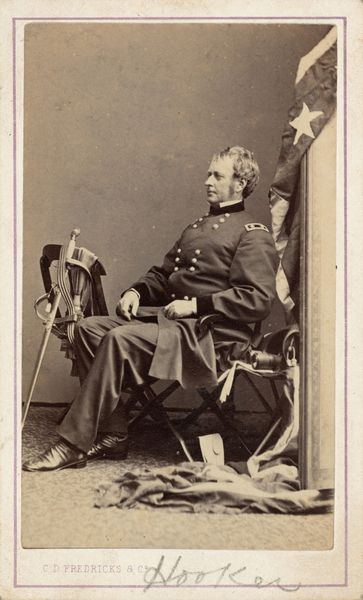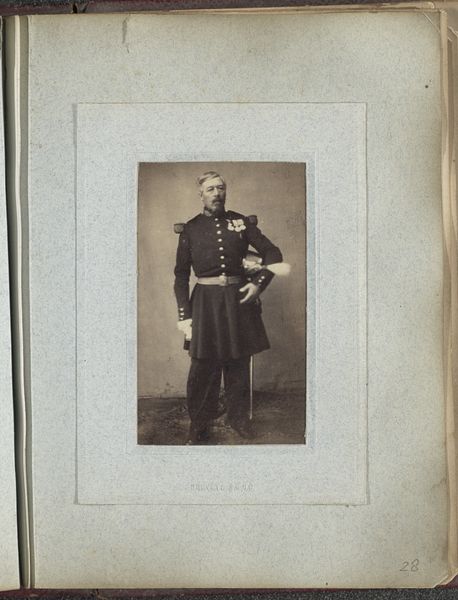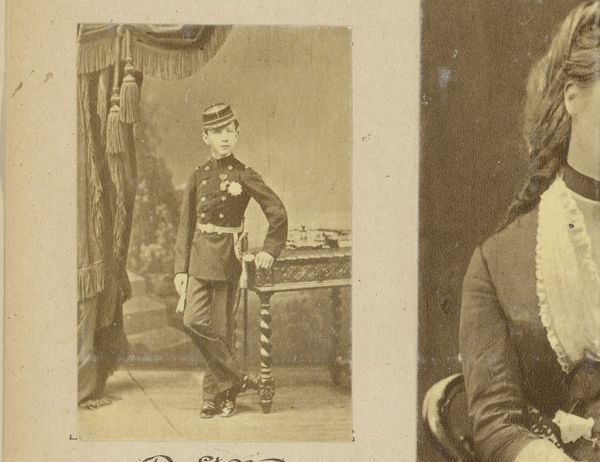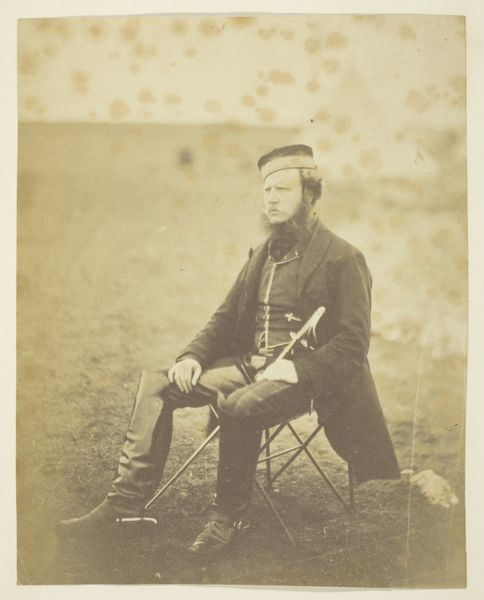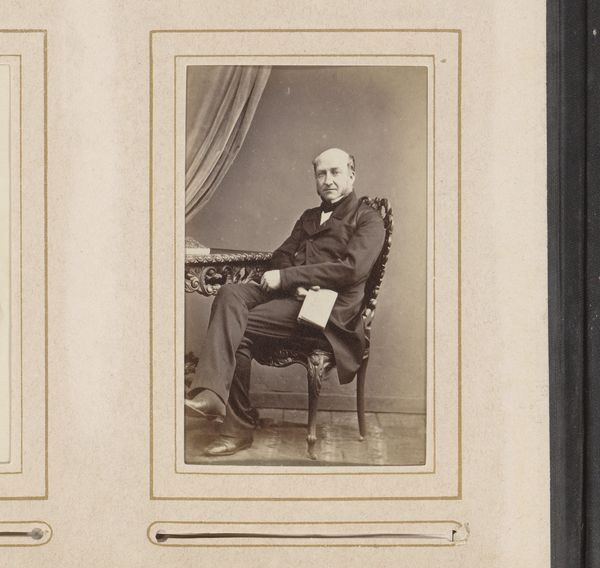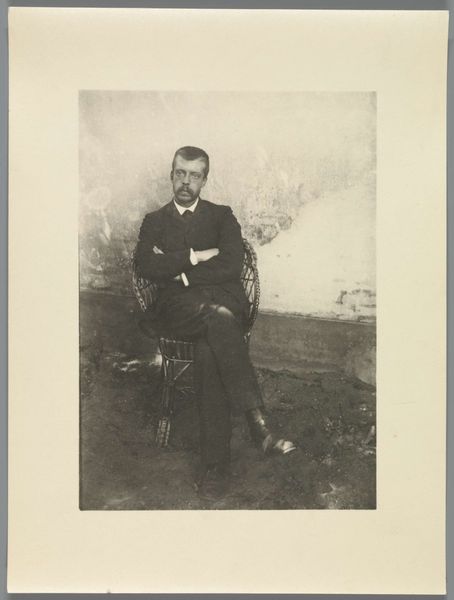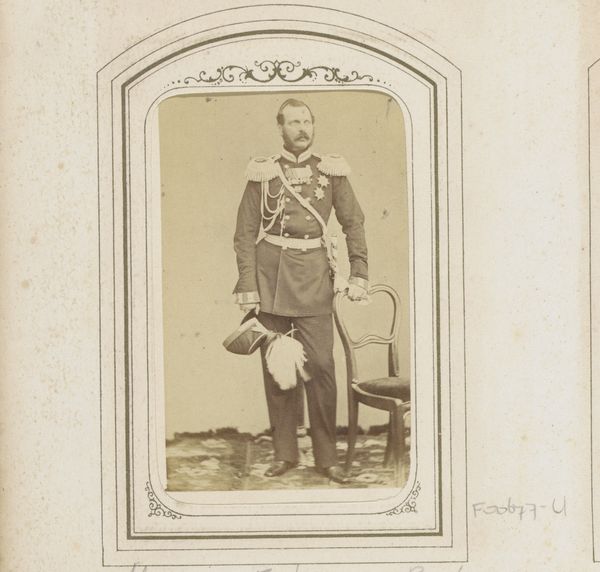
plein-air, photography, gelatin-silver-print
#
portrait
#
plein-air
#
war
#
photography
#
historical photography
#
gelatin-silver-print
#
19th century
#
men
#
history-painting
Dimensions: Mount: 11 9/16 × 15 13/16 in. (29.4 × 40.1 cm) Image: 6 13/16 × 8 7/8 in. (17.3 × 22.5 cm)
Copyright: Public Domain
Editor: Here we have Timothy O'Sullivan's gelatin-silver print, "Major General Pleasanton and General Custer," taken in 1863. It has a strangely relaxed feeling, considering the context. What catches your eye when you look at this piece? Curator: I see a fascinating intersection of labor, materiality, and the performative aspects of war. The very act of O'Sullivan lugging his photographic equipment across battlefields is a testament to labor. How the materiality of the print itself – the gelatin silver, the paper – connects us to the past. And, importantly, the photograph itself becomes a commodity, a collectible object in the expanding marketplace for war imagery. Does that materiality speak to you? Editor: It's interesting to think about the physical effort that went into creating this seemingly still image. So the soldiers in the image, what kind of statement do you feel it tries to make, and about which materials? Curator: Precisely. The materiality here isn't just about the photograph; it's about the very construction of identity and power. Note their clothing, equipment, weapons, horses… These materials signified authority and social standing. Their presentation isn’t arbitrary, but rather manufactured to impress. Can you see how this performance is deeply rooted in social dynamics? Editor: I think I understand what you're trying to say, but it almost seems staged for something terrible that wasn’t supposed to feel…normal. Curator: Exactly! It seems both banal and deeply unsettling at the same time. Think of how the mass production of photography allowed for this almost casual portrayal of power, circulated widely, normalizing what was, in reality, a landscape of conflict and immense suffering. We should be equally attentive to what’s missing from this scene too; such as images of the labor it took to support war efforts. What do you think is most fascinating about these details? Editor: Now that you point out that performative angle, it's like a quiet propaganda, meant to communicate unwavering authority. It does make the everyday settings feel deeply unnerving when juxtaposed with the power structures at play. Curator: Absolutely. Seeing how the image’s materiality and presentation contribute to this carefully crafted message is very relevant. I am grateful for your help making that come across in this tour.
Comments
No comments
Be the first to comment and join the conversation on the ultimate creative platform.

